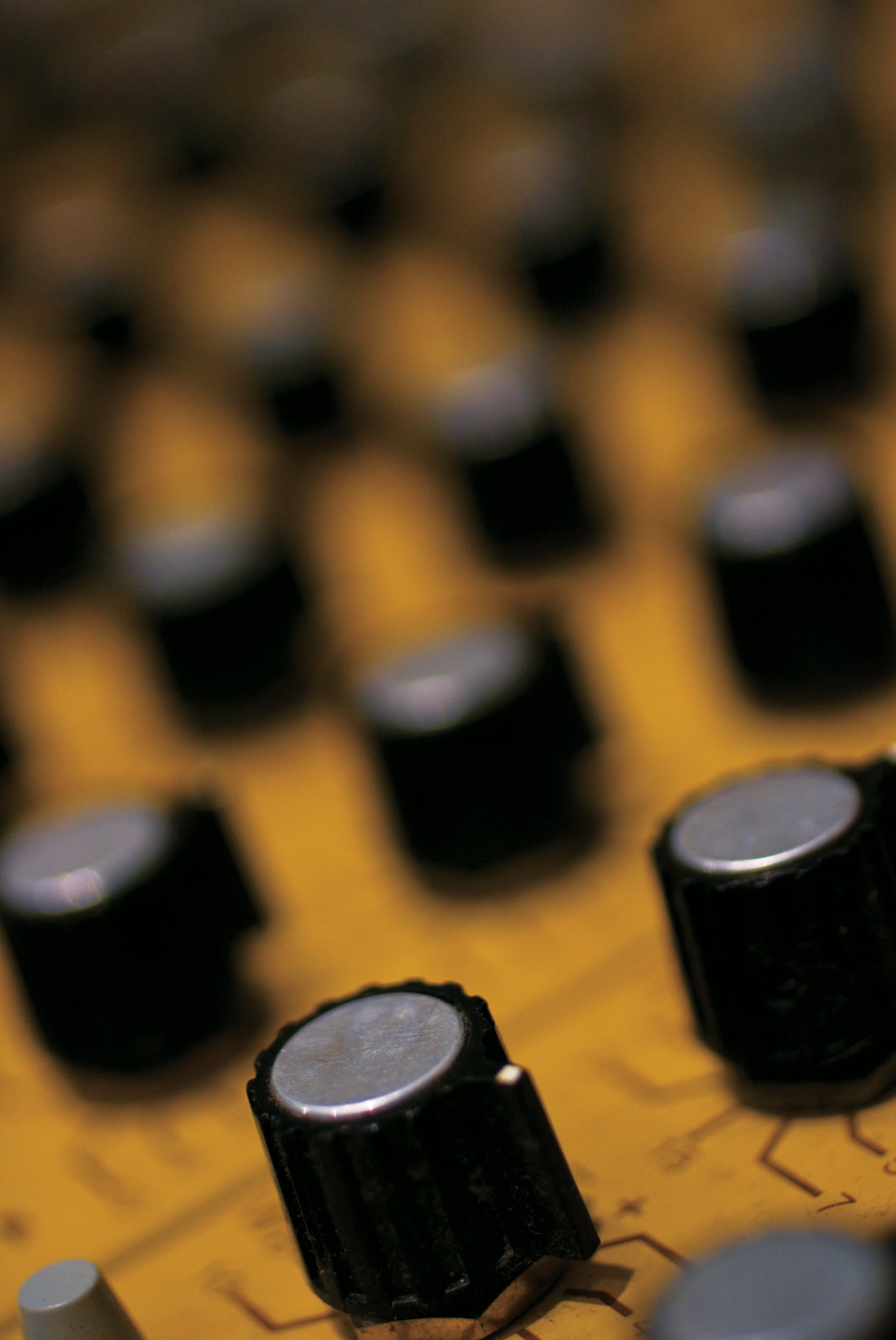Before considering any gear, I like to poke around the web for reviews, articles, and forum activity. I found very little talk of the m902's performance for pro audio applications. Most of the discussion was shared amongst audiophiles – listeners of the music we create. So before bringing the Grace into the studio, I took it to the living room. Using an S/PDIF cable, I connected the m902 to my CD player, then plugged my headphones into one of the two jacks on the front panel. (If my wife and I shared the same taste in music, we could enjoy listening together). Right off, I found the m902's imaging detailed, yet smooth. Grace's signature transimpedance amp circuitry handled my 55 Ohm AKG K 240 headphones with confidence, allowing me to really sink into the mixes. Never before heard nuances in performance-from songs I knew well-materialized.
Next, I began toggling in and out of Xfeed mode. The m902 incorporates a crossfeed circuit design developed by Dr. Jan Meier meant to simulate a realistic loudspeaker listening environment while minimizing ear fatigue. In crossfeed mode, the mix closed up a little, moving the stereo image into a more natural space. With Xfeed disabled, the field widened back into expected headphone character. In the studio, I took advantage of the Grace's input options: Digi 002 into S/PDIF, iPod into unbalanced RCA jacks, and console into balanced XLRs. Additional inputs include AES3, TOSLINK, and a handy USB connection for playback directly from a computer. All inputs (except USB) support sample rates from 32-192 kHz, with up to 24-bit resolution. A selection knob is clearly marked for all input modes. The stepped-volume rotary-encoder controls both output level and a host of cool submenu features. Moreover, unbalanced RCA line outs on the m902 (and balanced XLRs on the sibling m902B model) allow the unit to function as a superb-sounding DAC and monitor-level control for a small studio or a laptop with powered speakers. An optional infrared remote (m902RCU) works with both models.
I opened a Pro Tools session and set my output options. The m902's sample rate LEDS snapped into sync, illuminating the s-Lock lamp. s-Lock technology grabs the external clock source, then uses what Grace calls an "extremely stable, ultra-low jitter" internal clock to run the DA converters. This unique phase-lock loop circuit design is also used in Grace's higher-priced flagship models (the m904 and the m906). With the Grace's DACs running monitors from the Digi 002's S/PDIF signal, I noticed changes in the room immediately. Panning was defined without adding noticeable presence. A transparent, smooth vibe floated around the studio. With headphones, playback seemed to mimic speaker-based monitoring fairly well (with the desired reduction in width). I revisited entire project files and their individually recorded tracks. Along with the good comes the bad; shades of solid recording techniques triumph while flaws are instantly revealed. During playback of a recent rough mix, I caught a digital "scuff" that had escaped me on previous listens. The waveform of an electric bass track revealed a digital spike. I removed the Grace, connecting my monitors directly to the Digi 002's analog outputs; without the Grace's DACs, the glitch seemed very faint, illustrating that the m902 can be usefully unforgiving. With its exceptional converters and innovative circuit architecture, the Grace m902 is both an audiophile's wet dream and a professional, critical listening tool well suited for recording and mastering applications.
(m902 $1695 MSRP, m902B $1850, m902RCU $125; www.gracedesign.com)
-Scott McChane
Links:




_disp_horizontal_bw.jpg)